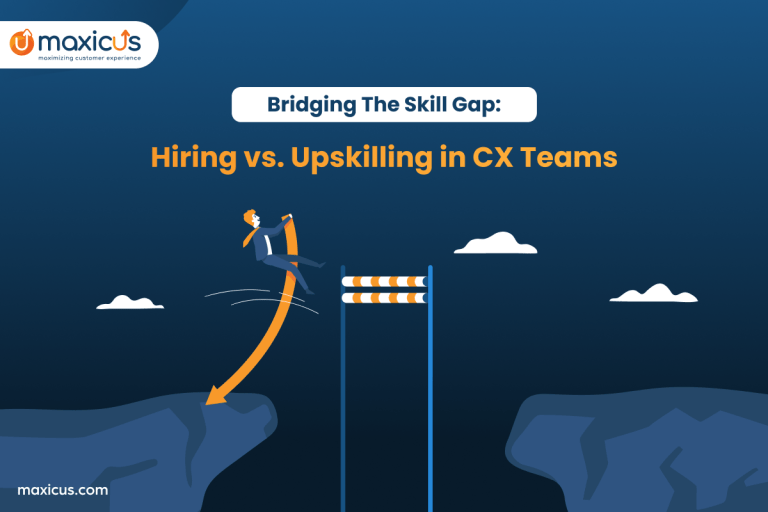The difference between call center and contact center services and their role in customer engagement
A contact center is a business segment within an organization that manages customer interactions. It is also referred to as a customer interaction center and is a central point from which all customer interactions across various channels are managed. Their primary purpose is to provide customers with efficient and effective technical support, customer service, and sales assistance. A call center and contact center are similar but different. People would be hard-pressed to pinpoint the difference between a contact center vs. call center. Both are tools for customer service, and both involve communication channels. That covers the similarities, so let’s look at the way these two models differ.
Difference between a call center and contact center
Call center:
A physical location where a high volume of customer and other telephone calls are handled by an organization, usually with some amount of computer automation. Call centers typically provide voice only inbound, outbound, and limited self-service customer interactions.
Contact center:
It manages inbound and outbound customer communications through a variety of channels. For example, customers could reach out to a company via email or chat with an agent on the company’s website. A contact center typically includes the functions of a call center, but may also include other types of customer touchpoints, including emails, webchats and social media interactions. Contact centers are often integrated into an enterprise’s customer relationship management (CRM) strategy.
Unlike a call center, which receives requests only by telephone, the contact center handles inbound and outbound customer communication over multiple channels such as telephone, web, chat, email, messaging apps, social media, text, fax, and traditional mail. Contact centers use various types of integrated technology to help resolve customer issues quickly, to track customer engagements, and to capture interaction and performance data. Contact centers are usually operated either by an internal department or outsourced to a third-party service provider.
Stay ahead of the competition with our reliable and cost-effective call center outsourcing services
Types of call center services
We are very well aware of the fact that customer service and customer support are an essential part of business success. Call centers are one of the tools that companies use to provide customers with a support system. Let’s look at the main types of call centers services:
Inbound call center support
An inbound call center hires agents who receive calls from customers. These call centers tend to focus on assistance for customers who need to solve their problems or need instructions. For example, if your internet connection stops working or if it’s too slow, you can call your internet provider’s customer help center to report the issue and get it fixed.
The main aim of an inbound call center is to resolve as many incoming customer issues as possible. The number of calls handled by agents largely depends on the number of people contacting the call center. On some days, the call center may be very busy, on other days, the inflow of calls may be much lower.
Outbound call center services
This type of call center is mainly used for sales, promotions, and customer surveys, but that may not always be the case. Some businesses choose to welcome their new clients with “welcome calls” or ensure adequate service with post-sales/support calls, during which agents provide further information on the company’s products or policies.
Hybrid call center services
Some call centers do both inbound and outbound work. They are referred to as hybrid call centers, meaning they are a hybrid, or mixture, of inbound and outbound work, of answering as well as making calls.
For companies that do both inbound work and outbound calling, the impulse of C-level management is to combine both activities into one consolidated call center. Hybrid call centers can work in a corporate environment, they shouldn’t be pursued without extensive consideration and diligent preparation.
Virtual call center
Many businesses have opted for virtual or cloud-based call centers that combine the services of inbound and outbound call centers with various advanced features. Virtual call centers can be run from anywhere, as the set-up is easy, quick and you don’t need any special programming skills or equipment. Users only need a computer or a phone with an internet connection to access the service. A huge advantage of virtual call centers is the possibility to integrate them with your existing tools, such as CRM or sales support systems.
How does a contact center work?
Contact center agents are customer service or sales professionals that handle phone calls, emails, live chat messages, SMS texts, and support tickets for companies. The nature of the calls and messages they handle can vary from simple bill payments and order inquiries to complex support questions and complaints. And they are typically responsible for handling a large number of inquiries each day.
Some stakeholders involved in the proper functioning of a contact center are:
- Agents
- Supervisors & Team Leaders
- Operations Managers
- Trainers
- Quality analysts
- Recruiters
- IT technicians
Call centers & contact centers: Their role in customer engagement
As per a Harvard Business Review article, a 5% increase in customer loyalty can increase profits by up to 95% and the cost of acquiring new customers is 5 to 25 times more than retaining existing ones.
The high cost of new customer acquisition warrants a customer retention strategy, not only reduce customer churn but also to drive revenue. Contact centers have an important role to play in achieving this as customer satisfaction is what ensures customer loyalty. There are challenges aplenty in the workings of the systems in the relatively older call centers which still rely on IVRs that provide voice-based options and keys-based inputs to select options – these can sometimes lead to customer misery and not satisfaction.
According to a Harris Interactive survey, 75% of customers believe it takes too long to reach a live agent and the key metric “Customer Wait Time” is a reflection of this challenge.
Other problems plague customer service operations such as inconsistent experience across channels, security, delayed problem diagnosis, dispersed data, need for multilingual agents, etc. This calls for a dire need to re-imagine the Next Generation Customer Support Center. In the context of the digital-first customer, these should revolve around the three themes of Augment/Empower Me, Help Me and Advise Me for the benefit of the customer approaching your brand for support.
By implementing the Next-Generation customer support center and transformational use cases with the latest AI-based technologies, outsourcing can be leveraged in making customer service transformation more tangible. Also, delve into the metrics impacted due to the usage of processes and technologies to manage and retain customers which can help contact centers transform from being a cost center to a profit center.
The prerequisites for a smart and modern customer service organization are to have customer service teams that will fix problems for many customers at once, instead of chasing issues one at a time. They will respond faster to concerns and move beyond operational demands to deliver proactive strategies that drive business growth.
Customer engagement: How to measure it & Why it is important
A Gallup study found that fully engaged customers represent a premium of 23% when it comes to sharing of wallet, revenue, profitability, and relationship growth when compared to average customers.
On the other hand, actively disengaged customers represent a 13% discount on the same metrics. In addition, PeopleMetrics found that companies focusing on customer engagement have revenue 13% higher than average. Contrast that with the 36% revenue penalty for those companies with poor customer engagement.
The willingness of customers to spend their time on the company for mutual benefit, often through brand advocacy or other involvement. Companies reviewing their engagement analytics might consider looking at customer referrals, advocacy on social media, reviews, and/or participation on customer advisory boards.
We’re breaking down the top customer engagement metrics here:
Quality and Volume of Online Reviews
Thanks to technology, customers are taking a more active role in finding product or service providers by conducting online research before choosing a provider. For example, in healthcare customer support, According to a Patient Pop survey, nearly 70% of patients consider having a positive online reputation as a key factor in choosing a provider.
The quality and volume of customer reviews are one of the easiest ways for you to measure your customer engagement online and it has the most direct ROI affiliated with it. If that isn’t enough of a reason to pay attention to your online reputation, remember that online reviews are a key indicator of customer satisfaction. Paying attention to what your customers say online not only impacts your ability to attract the new customer but also helps identify opportunities to increase your current customer satisfaction and ultimately retention.
These are the kinds of metrics your practice managers and executive team are going to care about as they directly influence the bottom line.
Internal Survey Results
Similar to online reviews, the volume of customers responding to product or service experience surveys is a good indicator of how your product or service is perceived. If you are sending out a lot of surveys without much response, you may not be getting the kind of feedback you need to improve the customer experience.
Having low response rates could mean a variety of things, from the customer being satisfied with your level of service to them having one foot out the door and exploring a different provider.
Getting this customer feedback will help your executives make the right operational decisions needed to improve customer retention, which should be the ultimate goal of your survey data.
NPS Score
In addition to your online reputation management and internal surveys, no customer engagement metrics are complete without the net promoter score. This metric determines how likely your current customer is to recommend your product or service to others.
This metric should give you a clear idea of how likely your current customers are to refer your product or service to friends, family, or other acquaintances. While online reviews are trusted just as much as personal referrals, personal recommendations are still the highest-quality lead possible for your business.
Don’t ignore your net promoter score if you want to focus on growing your customer base!
Customer engagement is important for business growth
The digital marketplace offers customers a greater range of options than they’ve previously experienced. Now, the majority of value is gathered over time through a continuing cycle of commitment and recommitment. Customer loyalty has, therefore, become paramount to long-term growth and success; nurturing existing customers sets your enterprise up for success well into the future.
Partner with us and take your customer service to the next level with our call center outsourcing
To maintain a customer’s interest, enterprises need to be responsive to change, alert to a customer’s day-to-day needs, and infrequent contact. Customer engagement helps to continually demonstrate your commitment to the customer and allows you to deliver value in every phase of the customer journey.
Customer engagement is the use of communication to demonstrate how much you value your customer’s business and how you are trying to help them meet their goals. And optimizing your contact center goals and operations is one sure-shot way to stepping up your customer engagement game.










